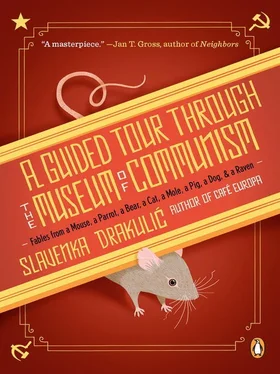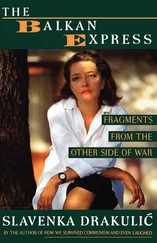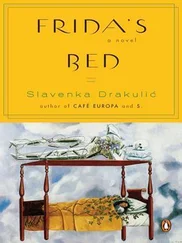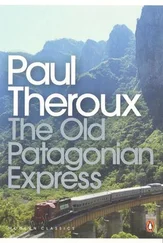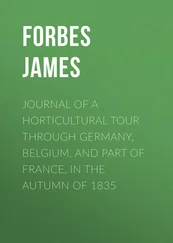• • •
Yes, it is hard for me to be a patriot in cooking, although I am expected to be just that when writing a Hungarian cookbook—even if a pig of any other nationality would be in the same position. We Hungarians still like to believe and convince others that our cuisine—well, “our” indeed!—is one of the most famous and best in the world—at least to us! I invite you to judge for yourself, to try it out. Here you will find tasty and practical meals, a bit exotic perhaps for your palate, and therefore new and exciting. But why not? Westerners always seem to be looking for these qualities in everything, although it is not clear why. I suppose that today, more than ever, people are looking for excitement everywhere.
Finally, a word about recipes.
Recently I invited a friend to dinner and served her—guess what?—goulash. She was delighted. A few days later she called me because she wanted to make it herself, which is one of the reasons for writing this book. But she did not call me to ask for the recipe. She called to tell me that she had discovered that there are too many recipes! As she did not have a Hungarian cookbook, she went on the Internet and immediately, with a single click, found hundreds of recipes for goulash at a single address! Among others, they included goulash cooked with rice, or with ground beef or even precooked meat, not to mention Parmesan cheese, ketchup, and even apples, which some people apparently add to the dish. These recipes, however, have little to do with goulash the way we Hungarians make it, or with the recipe you can find in this cookbook. In her confusion, my friend phoned me. “What shall I do?” she asked. “Is there no original, meaning one single, recipe for goulash?” She may have thought that this was a simple question, not being aware that this meal had also become a metaphor for our society—indeed, for the Socialist political regime we had. In the last decade, however, sooner than you could say the name of this stew, the recipe for goulash turned into a question of nothing less than—national identity!
The question of whether there is one original, traditional recipe (with obligatory ingredients excluding all others) for a goulash seems to be central to this discussion. But for Hungarian nationalists, the concept of national identity is modeled—I am afraid—after the old-fashioned model of national emancipation of peoples living in the Austro-Hungarian monarchy. In those days, national identity was perceived as static, as something cast in stone: There is a people; there is a language, culture, tradition—as well as a food, I might add—so there should be a state, too. And all that (except for the state) is God given and has to be guarded with one’s life, because it is always under threat from its enemies. Still, today apparently there are people who propagate this calcified idea of national identity. For them, goulash is part of their Magyarness and, therefore, something sacrosanct. They fear for it now; Hungary is a member of the European Union and the forces of globalization are threatening our identity more than ever. If we are not going to disappear as a nation, we have to protect it fiercely, they say. Even if it is a question of using a tomato when making goulash! There are particularly nationalist political parties that pride themselves on being at the front line of defending this beef stew. They promise to return its national pride and dignity, forgetting that nowadays the original ingredients mostly come from elsewhere: peppers from Holland; beef from Denmark; potatoes maybe from Spain; and garlic from as far away as China. Forgetting also that it is not in the nature of this meal to be strictly controlled, or it could easily turn into something opposite that smacks of… well, yes, of the gulag.
Social scientists today know that there is, of course, a modern approach to the national identity issue. From this point of view any national identity, rather than something God given is a social construct. It means something created (perhaps like goulash) as opposed to something God given (like paprika). Paprika is—well, paprika. But goulash changes constantly—as does national identity, composed of many more elements than a nationality, a language, a history, or a tradition. To such an extent that it is nowadays called a multiple identity. In the context of this cookbook, I myself would name it a sandwich identity! For example, I am of Hungarian origin, but I have dual citizenship, and my loyalties are never in conflict except during the World Cup in soccer, when I tend to root for the Hungarian team. My individual identity, my family identity as a Mangalitza pig—followed by my local, regional, national, and European identities—are not in conflict. Rather than only through national belonging (and national food), I define myself through my other interests—like my feminism, club membership, love of travel and swimming, and so on.
Therefore, in regard to the goulash-as-national-identity question, I think that it is important to stick to the basic recipe, but various additions are allowed, although (again!) the question can be raised: How far can one go and still be able to call it a goulash? But according to my friend, to my astonishment and amusement, this dilemma has already been solved on the Internet. There every mixture remotely similar to our kind of goulash is a goulash nevertheless. At least the name remains, and I hope that it is never going to be confused with gulag. Isn’t that something to be proud of?
As any reader of this introduction will surely understand by now, the most important ingredient of any goulash—as well as goulash communism—is tolerance. Even though this particular ingredient is never mentioned in any Hungarian cookbook. And this is why my cookbook, in the end, is inevitably political. This is why it stands for the freedom to interpret basic recipes while still preserving the identity, the Magyarness, of the dishes, of Tokay wine, of PIK salami, and all what we call Hungarica.
I like to think of my cookbook as promoting a Hungarian nouvelle cuisine of a sort. I also like to think—perhaps this reveals my vanity!—that understanding the difference between a goulash and a gulag could contribute to understanding why it is so hard, and why it takes such a long time, to change the mentality of people who for decades were haunted by this difference.
At the end, dear patient reader, I am aware that I started this long but necessary introduction in a light tone and ended up embroiled in politics, history, and identity—just like a typical East European intellectual—and I don’t apologize for that.
As for the recipes that follow, I can only wish you enjoy them regardless of how original they are! Jó étvádyat!
VII
AN INTERVIEW WITH THE OLDEST DOG IN BUCHAREST
So, my dear friend, you’ve come all the way from Vienna to ask why there are so many dogs on the streets of Bucharest, even in the very center? You tell me that “there are an estimated three hundred thousand stray dogs in Bucharest, a city of more than two million people, and there are up to fifty incidents of biting per day”—figures you found in the news.
Striking statistics, and true, indeed.
Forgive me for saying so, but you must be a foreigner who is here for the first time to ask about dogs. I wouldn’t say that you’re naive, just that this is what foreign visitors like you notice first: the impossible traffic situation and the stray dogs. At this time of day I bet it took you two hours to get from the airport to my home, although it shouldn’t have taken more than thirty minutes? Am I right? Of course, but Romanians are used to it. They prefer to drive their cars, even if they have to drive at the pace of a snail. Our local humans don’t notice us dogs any longer—and if they do, unlike you they seem not to consider us a problem. You see, one gets used to everything with time, even thousands of dogs in the streets of, shall we say, one of the European Union’s capitals.
Читать дальше
